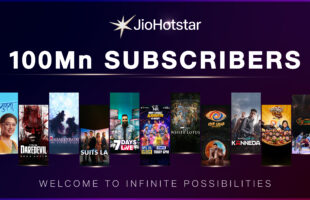INDIA
As the world’s third-largest TV market after China and the United States, India has an estimated 247 million households of which 150 million have ownership to a television set. These are being served by cable TV systems, DTH services, IPTV services, and the terrestrial TV network of Doordarshan. The pay-TV universe consists of around 94 million cable subscribers including around 0.91 million subscribers in notified conditional access system areas using STBs; 46.25 million registered DTH subscribers; and around half a million IPTV subscribers. The terrestrial TV network of Doordarshan covers about 92% of the population of the country, through a network of 1,415 terrestrial transmitters, according to the Telecom Regulatory Authority of India (TRAI).
TRAI adds that the broadcasting services sector consists of 26 pay broadcasters/aggregators that contributes to an estimated 60,000 cable operators, 6,000 Multi System Operators (MSOs), six pay DTH operators, and the public service broadcaster, Doordarshan, which has free-to-air DTH service– DD direct plus. There were 831 TV channels registered with the Ministry of Information and Broadcasting at the end of financial year 2011 – 12, out of which 168 were pay channels.
According to Digital TV Research, India crossed the 100 million mark for pay-TV subscribers in August 2011, representing more than 70% of TV households. As stated by the India Digital TV Forecasts report, there is still plenty of growth to come, with 139 million pay-TV subs forecasted for 2016. ARPUs will remain low in India, though pay-TV revenues will reach US$8 billion in 2016.
Revenues from advertising is expected to exceed US$9.64 billion in 2018, from US$5.62 billion in 2013 (CAGR of 13%), according to the CII-PwC study. It is also predicted that the film industry will grow steadily at a CAGR of 12%, following higher local and foreign box office selections and, cable and satellite rights.
In December 2014, it was announced that News First TV had launched a new online TV channel in India. The 24-hours news channel aims to capture breaking news and current affairs from any location at a moment’s notice. Furthermore, Zee Media Corporation Limited announced their intentions to enter English news broadcasting, with sights set on going global.
According to Deloitte’s India Technology, with the significant increase in penetration of smart phones and the expansion of the 3G network in India, the country will likely see roughly nine billion mobile applications to be downloaded in 2015.
Also, Twitter announced in January 2015 that it has reached an agreement to acquire Zip Dial, its product partner based in Bangalore. This is Twitter’s first ever acquisition in India, and will see the social media platform increase in accessibility to people around the world.
Based on the Trust Research Advisory’s Brand Trust Report, India Study 2015, NDTV has been named ‘India’s Most Trusted Media Brand’ for the second year running. The report that measured and understood consumers’ trust and brand insights were quantified by measuring variables that infl uences consumer behaviour.
In March 2015, Turner Broadcasting announced the expansion of its industry-leading kids’ entertainment portfolio with the launch of Toonami, a channel dedicated to bringing high-octane animated action to kids, superhero fans and their families across India.
In March 2015, Turner Broadcasting announced the expansion of its industry-leading kids’ entertainment portfolio with the launch of Toonami, a channel dedicated to bringing high-octane animated action to kids, superhero fans and their families across India.
In that same month &TV has created a benchmark through a tie-up with the world’s biggest and popular trivia game app – QuizUp. Through this partnership, the channel enjoys the status of being the only Indian GEC to be featured on this global app. In sync with the format of India Poochega Sabse Shaana Kaun?, a distinctive topic – Common Sense – was created exclusively for the app and is powered by &TV.
In April, it was announced that a local version of the hit reality competition series, America’s Next Top Model created by Tyra Banks will make its way to India. Bulldog Media & Entertainment has licensed the format from CBS Studios International, with India’s Next Top Model broadcasting on MTV India, July 2015. The series promised the same excitement and anticipation as the international format that continues to be a worldwide success.
Indian channels distributed worldwide have also been doing well. In Americas, Zee TV continues to garner the highest viewership share among South Asian networks. Zee TV HD and Zee Bollywood HD were launched on additional platforms. Within a few weeks of &TV and &TV HD’s launch in the UK, the channels were ranked among the top 5 Indian channels in the country. Zee TV and Zee Cinema continues to rank first amongst South Asian channels in their respective genres in the UAE.
Most recently, Zee TV introduced Zee Magic, a completely customized general entertainment channel for French audiences in Africa, showcasing French dubbed Indian movies, series, food, reality shows and much more. The channel has been available on the Canal Plus Overseas platform on #51 since 1 October, launching with three award winning series, Remriage (Punar Vivah), Emariage, La Promesse (Kasamh Se), and Lien Sacre (Pavitra Rishta).
With the expansion of many of their channels, the Indian television market is evidently a booming business to look out for.
PAKISTAN
CASBAA reports that the multichannel market is changing rapidly due to growth in both authorised and unauthorised cable penetration. More than eight million households receive satellite channels, mostly through local cable operators, which are predominantly analogue basedthus limited in quality and quantity of channels offered.
According to a report by Gallup Pakistan, cable viewership increased by 20% from 2011 to 2013 to stand at a figure of 64%. The growth in cable viewership was mainly contributed by a growth of viewership in rural areas, which at household level, increased by 11% in 2011 to 30% in 2013. Also in that year, five channels cumulatively held the highest market share of the news category with 69% of viewership.
However, despite the explosion in the number of independent news providers, news coverage by itself has not become sufficiently diverse or inclusive. This is a result of certain news items being overemphasised while other issues- governance, education, health care, public works, etc.- remains unreported.
51% of households in Pakistan currently have a cable connection while 86% of households in urban areas have access to a cable connection. In rural areas, only 30% claim to have a cable connection in their homes. Also, CASBAA’s 2014 report found out that 54% of Pakistan TV homes have multichannel TV, with an 85% reach in urban homes.
Cable and satellite ratings indicate that the most watched cable channel in Pakistan are the privately owned channels which rank high in terms of ratings and reach. Since 2002, 89 private television channels have been launched and 26 foreign channels have been granted landing rights. The share of TV advertising in Pakistan is split into terrestrial TV advertising and multichannel TV advertising.
Terrestrial TV advertising takes up approximately 65% of advertising in Pakistan whereas multichannel TV takes up approximately 35% of the advertising. According to a report by Media Bank, under the news channels, City 42 holds the position of the highest percentage share of advertising minutes with 9%, and GEO News coming next with 8%. In addition, City 42 also leads the prime time channels across all genres with 40% share of advertising minutes.
In the beginning of August 2013, Star India was awarded the broadcast rights for the 2014 winter Olympics and 2016 summer Games for seven South Asian countries, including India and Pakistan. The broadcast rights included free-to-air television, subscription television, internet and mobile in Pakistan.
The Pakistan Electronic Media Regulatory Authority is responsible for facilitating and regulating the establishment and operation of all broadcast media and distribution services in Pakistan established for the purpose of international, national, provincial, district, and local or special target audiences.
Even though TV dominates the media market in Pakistan (76.2% of adults watching weekly); mobile phones are becoming more common, according to the Broadcasting Board of Governors. The ways Pakistanis engage with the media is shifting, with mobile being the primary way to go online and listen to the radio; coupled with 3G that is being introduced recently.
The Pakistan television market is full of potential to do even better than they are right now. It is predicted that the media penetration through television and internet access in semi urban areas will continue to grow as cable operators expand their network, and continue to digitise head ends.








